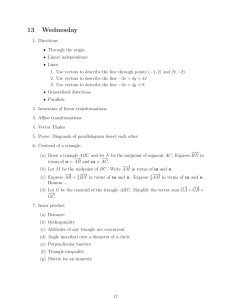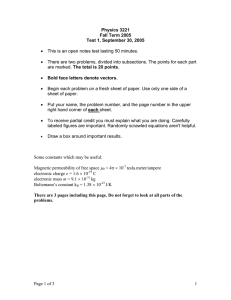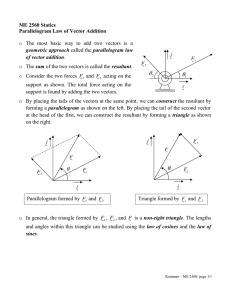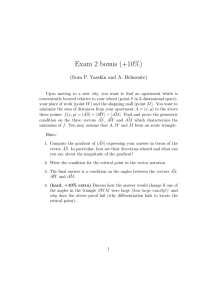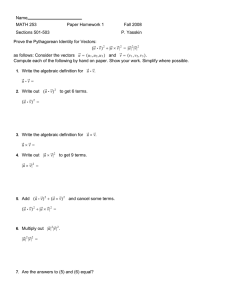MITOCW | MIT18_02SCF10Rec_07_300k
advertisement
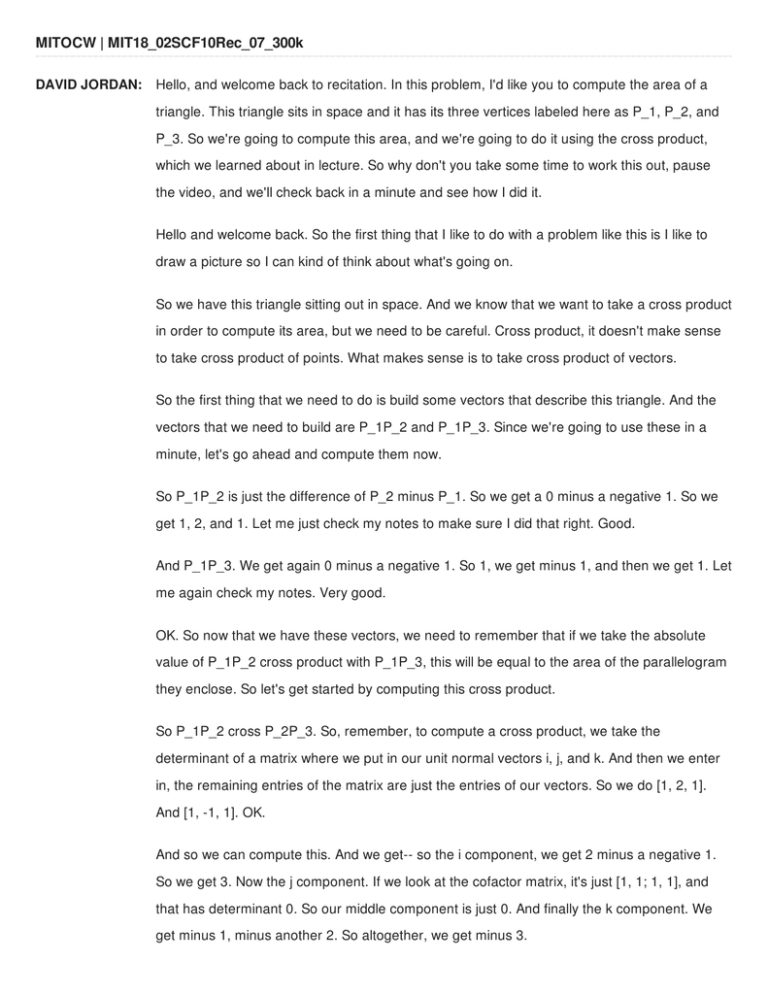
MITOCW | MIT18_02SCF10Rec_07_300k DAVID JORDAN: Hello, and welcome back to recitation. In this problem, I'd like you to compute the area of a triangle. This triangle sits in space and it has its three vertices labeled here as P_1, P_2, and P_3. So we're going to compute this area, and we're going to do it using the cross product, which we learned about in lecture. So why don't you take some time to work this out, pause the video, and we'll check back in a minute and see how I did it. Hello and welcome back. So the first thing that I like to do with a problem like this is I like to draw a picture so I can kind of think about what's going on. So we have this triangle sitting out in space. And we know that we want to take a cross product in order to compute its area, but we need to be careful. Cross product, it doesn't make sense to take cross product of points. What makes sense is to take cross product of vectors. So the first thing that we need to do is build some vectors that describe this triangle. And the vectors that we need to build are P_1P_2 and P_1P_3. Since we're going to use these in a minute, let's go ahead and compute them now. So P_1P_2 is just the difference of P_2 minus P_1. So we get a 0 minus a negative 1. So we get 1, 2, and 1. Let me just check my notes to make sure I did that right. Good. And P_1P_3. We get again 0 minus a negative 1. So 1, we get minus 1, and then we get 1. Let me again check my notes. Very good. OK. So now that we have these vectors, we need to remember that if we take the absolute value of P_1P_2 cross product with P_1P_3, this will be equal to the area of the parallelogram they enclose. So let's get started by computing this cross product. So P_1P_2 cross P_2P_3. So, remember, to compute a cross product, we take the determinant of a matrix where we put in our unit normal vectors i, j, and k. And then we enter in, the remaining entries of the matrix are just the entries of our vectors. So we do [1, 2, 1]. And [1, -1, 1]. OK. And so we can compute this. And we get-- so the i component, we get 2 minus a negative 1. So we get 3. Now the j component. If we look at the cofactor matrix, it's just [1, 1; 1, 1], and that has determinant 0. So our middle component is just 0. And finally the k component. We get minus 1, minus another 2. So altogether, we get minus 3. So what that tells us now is that this quantity here, the magnitude of the cross product, is just 3 times the square root of 2, just looking at the length of this vector here. So we're almost done, but let's go back and look at what we had to start with. We were interested in the triangle over here which was enclosed by the vectors P_1P_2 and the vectors P_1P_3. And what we just computed is actually the area of this parallelogram, which as you can see is twice the area of the triangle that we're actually interested in. So going back over here, we see that the area of our triangle is equal to 3 root 2, and we just need to divide by 2 to get the triangle. OK? And I'll leave it at that.

